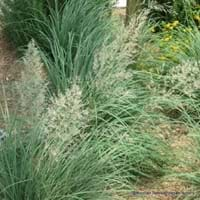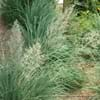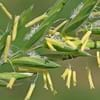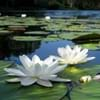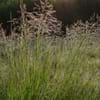Life Span
Perennial
Perennial
Origin
North America, United States, Southwestern United States, Texas, Mexico
Hybrid origin
Types
Foxtail muhly, Devils Canyon muhly, alkali muhly
Victoria Rhubarb
Colorado Red Rhubarb
Turkish Rhubarb
Number of Varieties
Not Available
Habitat
High elevation, Hillside, Slopes
gardens, Grassland, Humid climates, Tropical regions, Urban areas
USDA Hardiness Zone
7-10
5-8
Sunset Zone
Not Available
2b, 3a, 3b, 4, 5, 6, 7, 14, 15, 16, 17
Habit
Clump-Forming
Clump-Forming
Flower Color
Pink, Purple, White
Light Pink
Flower Color Modifier
Bicolor
Not Available
Fruit Color
Brown, White
Burgundy
Leaf Color in Spring
Light Green, Blue Green
Green, Dark Red
Leaf Color in Summer
Light Green
Green, Dark Red
Leaf Color in Fall
Blue Green, Gray Green
Green, Dark Red
Leaf Color in Winter
Blue Green, Gray Green, Tan
Light Green
Leaf Shape
Grass like
Compound
Plant Season
Summer, Fall, Winter
Spring, Summer, Fall
Sunlight
Full Sun, Partial Sun, Partial shade
Full Sun, Partial Sun
Growth Rate
Medium
Medium
Type of Soil
Clay, Loam, Sand
Clay, Loam
The pH of Soil
Acidic, Neutral
Acidic, Neutral, Alkaline
Soil Drainage
Well drained
Average
Bloom Time
Early Fall, Fall
Summer, Late Summer
Tolerances
Drought
Drought
Where to Plant?
Container, Ground, Pot
Ground
How to Plant?
Divison, Seedlings
Stem Planting
Plant Maintenance
Medium
Medium
Watering Requirements
Needs less watering, Water every 3 weeks until the root ball is wet
Do Not over Water, Requires regular watering, Use Mulches to help prevent water loss during hot and windy weather, Water Deeply
In Summer
Lots of watering
Lots of watering
In Spring
Moderate
Moderate
In Winter
Average Water
Average Water
Soil pH
Acidic, Neutral
Acidic, Neutral, Alkaline
Soil Type
Clay, Loam, Sand
Clay, Loam
Soil Drainage Capacity
Well drained
Average
Sun Exposure
Full Sun, Partial Sun, Partial shade
Full Sun, Partial Sun
Pruning
Grass Cuttting and pruning up to 5cm, Prune in early spring, Remove damaged leaves, Remove dead branches, Remove dead leaves
Remove damaged leaves, Remove dead branches, Remove dead leaves
Fertilizers
All-Purpose Liquid Fertilizer, EDTA iron
All-Purpose Liquid Fertilizer
Pests and Diseases
Red blotch
Red blotch
Plant Tolerance
Drought
Drought
Flower Petal Number
Single
Not Available
Foliage Texture
Fine
Coarse
Foliage Sheen
Matte
Glossy
Attracts
Bees, Butterflies
Not Available
Allergy
Pollen
Skin irritation
Aesthetic Uses
Ground Cover
Showy Purposes
Beauty Benefits
Not Available
Not Available
Environmental Uses
Air purification, soil erosion prevension on hill slopes, Wildlife
Air purification
Medicinal Uses
Not Available
Not Available
Part of Plant Used
Not Available
Whole plant
Other Uses
Used as Ornamental plant
Culinary use, Used as Ornamental plant
Used As Indoor Plant
No
No
Used As Outdoor Plant
Yes
Yes
Garden Design
Dried Flower/Everlasting, Foundation, Groundcover, Mixed Border, Rock Garden / Wall
Feature Plant, Mixed Border
Botanical Name
MUHLENBERGIA emersleyi
RHEUM 'Ace of Hearts'
Common Name
Bull Grass
Ace of Hearts Ornamental Rhubarb, Ornamental Rhubarb
In Hindi
Bull Grass
सजावटी प्रकार का फल
In German
Bull Grass
Ornamental Rhabarber
In French
Bull Herbe
rhubarbe ornementale
In Spanish
Bull Hierba
Ornamental de ruibarbo
In Greek
Δελτίο Grass
καλλωπιστικά Ραβέντι
In Portuguese
touro grama
ornamental ruibarbo
In Polish
Bull Trawa
ozdobne Rabarbar
In Latin
Bull Grass
decentius Rhubarb
Phylum
Magnoliophyta
Tracheophyta
Class
Liliopsida
Not Available
Order
Cyperales
Caryophyllales
Family
Poaceae
Polygonaceae
Clade
Angiosperms, Commelinids, Monocots
Angiosperms, Core eudicots, Eudicots
Tribe
Eragrostideae
Not Available
Subfamily
Chloridoideae
Not Available
Difference Between Bull Grass and Ornamental Rhubarb
If you are confused whether Bull Grass or Ornamental Rhubarb are same, here are some features about those plants to help you choose better. Many people think that these two plants have the same characteristics, but one can see Bull Grass and Ornamental Rhubarb Information and learn more about it. Fertilizers required for proper growth of Bull Grass are All-Purpose Liquid Fertilizer and EDTA iron, whereas for Ornamental Rhubarb fertilizers required are All-Purpose Liquid Fertilizer. Hence, one should know the basic difference between Bull Grass and Ornamental Rhubarb if you are planning to have them in your garden to enhance its beauty.
<
Flowering PlantsImportance of Bull Grass and Ornamental Rhubarb
Want to have the most appropriate plant for your garden? You might want to know the importance of Bull Grass and Ornamental Rhubarb. Basically, these two plants vary in many aspects. Compare Bull Grass and Ornamental Rhubarb as they differ in many characteristics such as their life, care, benefits, facts, etc. Every gardener must at least have the slightest clue about the plants he wants to plant in his garden. Compare their benefits, which differ in many ways like facts and uses. The medicinal use of Bull Grass is Not Available whereas of Ornamental Rhubarb is Not Available. Bull Grass has beauty benefits as follows: Not Available while Ornamental Rhubarb has beauty benefits as follows: Not Available.
Compare Facts of Bull Grass vs Ornamental Rhubarb
How to choose the best garden plant for your garden depending upon its facts? Here garden plant comparison will help you to solve this query. Compare the facts of Bull Grass vs Ornamental Rhubarb and know which one to choose. As garden plants have benefits and other uses, allergy is also a major drawback of plants for some people. Allergic reactions of Bull Grass are Pollen whereas of Ornamental Rhubarb have Skin irritation respectively. Having a fruit bearing plant in your garden can be a plus point of your garden. Bull Grass has showy fruits and Ornamental Rhubarb has showy fruits. Also Bull Grass is not flowering and Ornamental Rhubarb is not flowering . You can compare Bull Grass and Ornamental Rhubarb facts and facts of other plants too.
